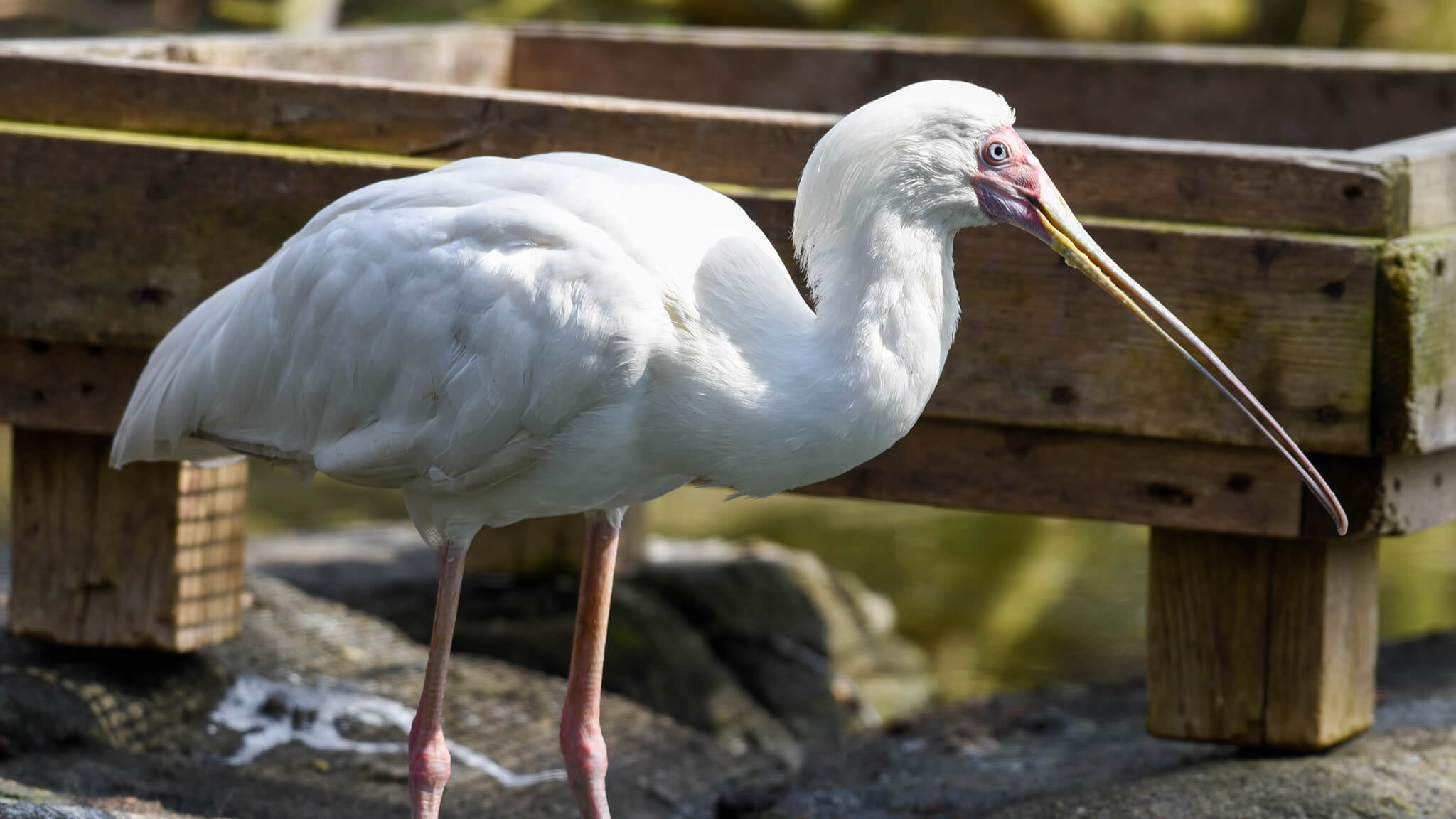Conservation Efforts at Home
The Maryland Zoo is committed to conservation of wildlife and wild places. When you visit, join as a member, donate, and support us in other ways, you contribute to that mission, but there are also actions you can take at home to contribute to conservation too.
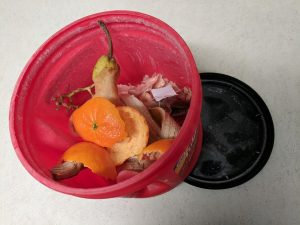
Compost at Home
Composting is an excellent way to reduce waste and give back to the planet. By composting, we not only reduce the amount of waste that goes into landfills, but also produce nutrient-rich soil additives that can be used to help grow healthy plants.
Food scraps that would otherwise be sent to a landfill are collected from leftover animal diets and staff lunch areas for composting. Each week these food scraps are turned and tended to by staff and volunteers. The finished compost is used as a soil-enriching additive in the Zoo’s Sustainability Garden. This garden grows food on-grounds to feed to our animals.
Compost is a better choice for a soil additive because the production of commercial fertilizers have a large energy cost that mostly comes from greenhouse gasses.
Composting is not just something that a large organization like the Zoo can do. It is a fantastic thing that any of us can do at home with the right information!
Looking for ways to compost at home? Resources at the links below can help you get started:
- Compost Crew – Getting Started
- Composting with the UMD Extension program, a digestible understanding of compost
- Composting, Get started in 5 easy steps, NPR
- How to Construct a Compost Pile – Chesapeake Bay Program
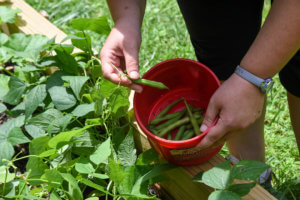
Create a Vegetable/Edible Garden
Transporting food over long distances is a major use of fossil fuels in the world. Purchasing food grown locally from field to table is an important way to limit fossil fuel use. Growing foods at home shortens that travel distance and can have many other benefits for the environment including reducing packaging. Luckily Marylanders have many options for growing food.
Have a small backyard or no backyard at all? Not a problem! Patio gardens, vertical gardens, and window boxes are all great options for small spaces and can be as complex or as simple as you want them to be. No matter the size of your garden, you can become a steward of the environment!
Click on the links below to gain more knowledge on how to garden the space around you:
- University of Maryland’s Extension program: “The how-to’s of gardening”
- Growing Vegetable Containers
- Vertical Gardening: Grow More Vegetables in Less Space
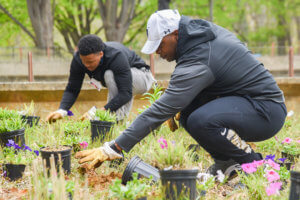
Choose Native Plants – The BEST Nature Has to Offer!
Planting native plants around your home can help enhance the beauty of your home while contributing to the environment around you.
Adding native plant species to a landscape or patio planter benefits the environment and local wildlife. Plants that are native to the region are adapted for the typical conditions in the area, meaning they will not need large amounts of additional water or chemical additives. These plant species also support native birds and pollinators, like bees and butterflies, with the right habitat and food. The best part of gardening with native plants is that they need little to no work because they’re truly used to growing without the help of humans.
Allowing the native species of plants to thrive will increase the probability of survival not only of your plants but the pollinators in your own backyard.
Native plants; need a place to purchase your own?
- Native Plant Gardening – University of Maryland Extention Programs
- Gardening and Its Benefits – Chesapeake Bay Magazine
- Native Plants for Wildlife Habitat and Conservation
- Herring Run Nursery
- Landscape Planning and Management Resources
- Rain Gardens Beautify Your Home and Benefit the Environment
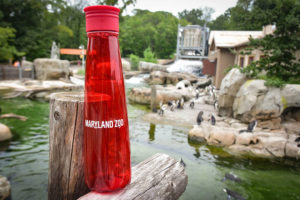
Reduce Plastics
While plastics have had many benefits to human health and innovation, it is becoming more clear that single-use plastics that are made for convenience are harmful to wildlife, the environment, as well as humans. Plastics have contaminated the environment even in far flung places such as the deep sea. Plastic items have been found to be a dangerous hazard to wildlife and the microplastics left behind as these items break down, have been found in many different animals including fish that humans consume.
By reducing plastic, and or limiting your plastic consumption you are committing to a wildlife-friendly practice.
Here are some ways to go plastic-free:
- Carry a reusable water bottle or mug instead of buying single-use containers.
- Bring a reusable tote bag to the store to carry your purchases home.
- Carry a reusable utensil kit in your bag or vehicle.
- Bring your own reusable containers to restaurants for leftovers.
- Choose highly recyclable materials when shopping rather than single-use items. For example, choose glass, aluminum, and paper over plastics and laminated paper.
- Eliminate plastic packaging by choosing shampoo bars, toothpaste tabs, and detergent sheets or powder.
Saving the environment doesn’t have to be a heroic action or a giant life change, however, making little edits to your day to day and being mindful of what goes into your trashcan can be immense!
Every year, the Maryland Zoo recommits itself to its pledge to reduce plastic waste. Each July, Zoo staff, volunteers, members, visitors and friends participate in the Plastic Free Ecochallenge, a contest and challenge to try new ways of reducing plastic use, complete conservation actions such as trash clean-ups, and explore the issue further with reading materials and documentary viewings.
Sharing this kind of knowledge and even more ideas of how to reduce the use of plastic can be one way to show your commitment to wildlife-friendly practices at home.
Here are a few resources to help you go plastic-free!
- Plastic Free Ecochallenge: Join the Maryland Zoo team each July!
- Plastic pollution facts and information – National Geographic
- Our Plastic Problem and How to Solve It
- 51 Ways to Reduce Plastic Use or Completely Eliminate It

Household Light Energy Reduction
Reducing household lighting is an easy and simple way to reduce your energy costs and therefore reduce your carbon footprint. Turning lights off both inside and outside of your home when not in use can have positive effects on the environment and save on energy bills at the same time. For more information to save household energy see these energy efficiency pollution prevention tips.
Unnecessary light pollution can have negative effects on wildlife such as migrating birds. For more information see information from Lights Out Baltimore.
Use Energy Efficient Lighting
Another way to save it is to purchase energy-efficient lighting. The BGE lighting program allows residents to purchase lights that greatly reduce their energy usage.
For more information, please visit:
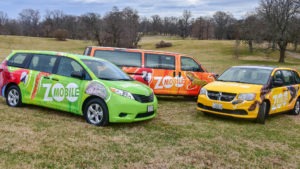
Say Yes to No-Idling
Did you know that it is not necessary to idle your car longer than 30 seconds to “warm it up” before driving it? While “warming up the engine “ might have been necessary for cars built decades ago, more modern car models are designed differently and can actually cause more wear on the engine in the long term. In fact, it is much more efficient to “warm up” your car by driving than by idling it.
Not only is idling not helpful to a car’s engine; there are laws in Maryland that prohibit idling of vehicles for more than 5 minutes.
Idling wastes fuel and money, and it is toxic to the environment and to human and animal health. Keeping your engine off until you are ready to drive is a simple way to help the planet and your health.
For more information, please visit:
Would You Like to Support Our Efforts?
The Maryland Zoo in Baltimore is a 501(c)3 non-profit organization that relies in large part on the generous contributions from people like you who care about our critical wildlife conservation efforts. These efforts would not be possible without your support. To make a tax-deductible, secure online donation to the Zoo below.
